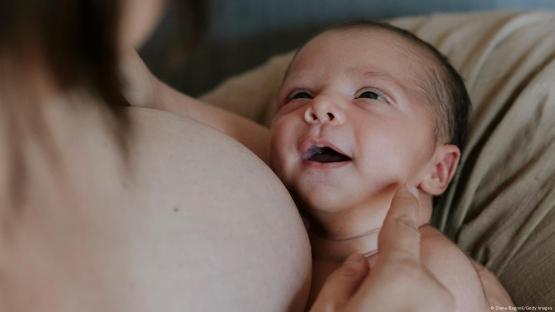SNIFFLES and coughs can all be symptoms of the common cold and are ever more present during the winter months.
But experts have warned that parents need to be more alert this winter, amid a rise in cases of Strep A .
Experts have urged parents to be on the lookout from Strep A symptomsOn Saturday, it was revealed that a 12-year-old boy had become the first secondary school student to die of the Strep A bug which is sweeping the country.
On Friday, the UK Health Security Agency (UKHSA) said five children had died in England , with one child also having died in Cardiff , Wales.
In most cases it will cause mild illness, and can lead to conditions such as scarlet fever , which is flu-like and tends to occur in children â it can be serious if not treated swiftly with antibiotics .
Dr Colin Brown, Deputy Director, UKHSA said while the illnesses is uncommon, parents need to be aware.
He said: “We are seeing a higher number of cases of Group A strep this year than usual.
“The bacteria usually causes a mild infection producing sore throats or scarlet fever that can be easily treated with antibiotics. In very rare circumstances, this bacteria can get into the bloodstream and cause serious illness â called invasive Group A strep (iGAS).
“This is still uncommon however it is important that parents are on the lookout for symptoms and see a doctor as quickly as possible so that their child can be treated and we can stop the infection becoming serious.
“Make sure you talk to a health professional if your child is showing signs of deteriorating after a bout of scarlet fever, a sore throat, or a respiratory infection.”;;
But what are the symptoms you need to be on the lookout for and when should you see a doctor?
Strep A
There are four key signs of Group Strep A to watch out for, according to the NHS. These are:
- A fever (meaning a high temperature above 38°C)
- Severe muscle aches
- Localised muscle tenderness
- Redness at the site of a wound
The invasive version of the disease happens when the bacteria break through the body’s immune defences.
This can happen if you’re already feeling unwell or have an immune system that’s weakened.
Two of the most severe examples of invasive disease are necrotising fasciitis â a very rare but life-threatening infection also called ‘flesh-eating disease’ â and toxic shock syndrome .
Speaking on Good Morning Britain today, Dr Amir Khan added that a sore throat is also a common symptom.
He added: “It’s very difficult to tell the difference between that kind of infection of a cold or flu.
“But often the runny nose is absent with Strep so you don’t have that kind of congestion.”;;
Dr Khan said kids between the ages of 5-15 can get it, but added that it’s most common in children under the age of 10.
RSV
Data from the UKHSA released last week revealed that there has been an increase in cases of respiratory syncytial virus (RSV) .
Figures show that the highest positivity rates are in children under the age of five.
Kids will often suffer with a runny or blocked nose, a cough and a slightly high temperature.
These include:
- breathing more quickly
- finding it difficult to eat or feed
- noisy breathing (wheezing)
- becoming irritable
Both flu and RSV can be deadly in children.
RSV is usually mild but in serious cases, can lead to severe respiratory illness and pneumonia , which can be also deadly, guidance from the Centre for Disease Control (CDC), states.
Cold
In most cases, you can treat a cold without seeing a GP and the NHS says you should start to feel better within a couple of weeks.
The symptoms are usually the same in both adults and children, but experts say they could last a little bit longer in kids.
The NHS says they can come on gradually and will often include the following:
- a blocked or runny nose
- sore throat
- headaches
- muscle aches
- coughs
- sneezing
- raised temperature
- pressure in your ears and face
- loss of taste and smell
Flu
When it comes to symptoms of flu, they may at first, seem like a common cold.
The NHS list the symptoms for flu as follows:
- sudden high temperature
- aching body
- feeling tired or exhausted
- a dry cough
- sore throat
- headache
- difficulty sleeping
- loss of appetite
- diarrhoea or tummy pain
- feeling or being sick
- less active (specifically children)
- pain in the ear (specifically children)
Covid
Children and young people can get Covid , but it’s usually mild and most will get better within a few days, the NHS states.
There are a myriad of symptoms you might experience when it comes to the virus and these can include:
- a high temperature of shivering
- new continuous cough
- loss or change of sense of smell or taste
- shortness of breath
- feeling tired or exhausted
- an aching body
- headache
- sore throat
- blocked or runny nose
- loss of appetite
- diarrhoea
- feeling or being sick.
It’s important that if you are worried about any of your child’s symptoms then you see a doctor.
In the event of an emergency, always call 999 or visit your nearest A&E department.




